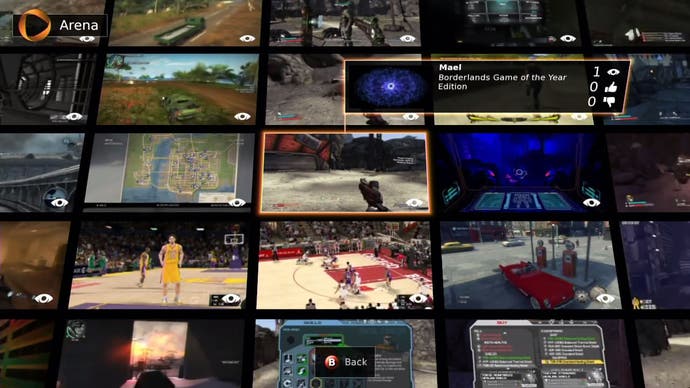OnLive
Merrily down the stream?
Game streaming service OnLive launched in the UK at the Eurogamer Expo last week. We've been running two tests of it since. This review, conducted by Dan at home, approaches it from the perspective of the man in the street. On Saturday, we'll present a full technical performance analysis by Digital Foundry's Rich Leadbetter.
Live gameplay, streamed directly to your home. Instant access to the latest games, with no downloads or installation. You press a button, and a computer hundreds (even thousands) of miles away responds instantly. It sounds like science fiction, but OnLive is now up and running in the UK, so we can finally put the claims to the test in a real-life domestic setting. Are we witnessing the majestic birth of a new era in cloud-based gaming, or a clumsy newborn that needs time to find its feet?
The answer, perhaps unsurprisingly, is a bit of both.
First, let's take a moment to pick apart exactly what OnLive actually offers. It's accessible via your PC or Mac at the OnLive website, downloading an app that then connects you to the OnLive servers. Sign-up is free, and you can then make purchases as and when you want, try 30-minute demos, rent games for three or five days, or sign up for a monthly PlayPass for £6.99 which grants you unlimited access to a selection of around 100 titles.
But OnLive is also a console, or at least a "micro console". This standalone kit costs £69.99, plugs directly into your broadband and HDTV and comes with its own wireless controller. You then access the same account and content, but from the comfort of your sofa.
The micro console
It's the micro console that most clearly reveals OnLive's ambitions. This is a service with at least one eye firmly on the living room. It's also here that the technology grinds most obviously against the limits of the real world and the expectations of mainstream consumers.
The micro console itself is a discreet little thing. Packaged in a sleek black box with tasteful orange highlights, it looks for all the world like you've picked up a really expensive pair of trainers. Inside is the console itself, a small, slim oblong about the same size as a 3DS. It's glossy, weighty and the prospect of using something so minimalist to pipe gameplay straight into your telly is tantalising.

You also get a wireless controller, unashamedly based on the 360 game pad design, right down to the "home" button in the middle with "back" and "start" to either side (although the positions of the left stick and superior d-pad are reversed). It's substantial, if slightly awkward in the hand: in design, feel and function it brings to mind any number of third-party Xbox peripherals, although the build quality is better than most. It does have rumble, a nice touch that could easily have been omitted.
Also in the box is the expected bundle of wires, including an HDMI cable for your TV. It's here that impulse purchasers will get their first shock. Since it demands so much bandwidth, the micro console has no wi-fi as standard. You can hook it up to an external wireless bridge but the recommendation is to use a direct ethernet connection to your router. There's a cable in the box, but at just five feet in length it's going to be of no use to anyone who doesn't already have their router within spitting distance of the TV. You'll either need to rearrange your home network or fork out for a longer cable.
It's the sort of essential info that isn't to be found on the swanky black box, and is the first of several awkward short-cuts that will make the OnLive experience a tough sell for the mass market.

